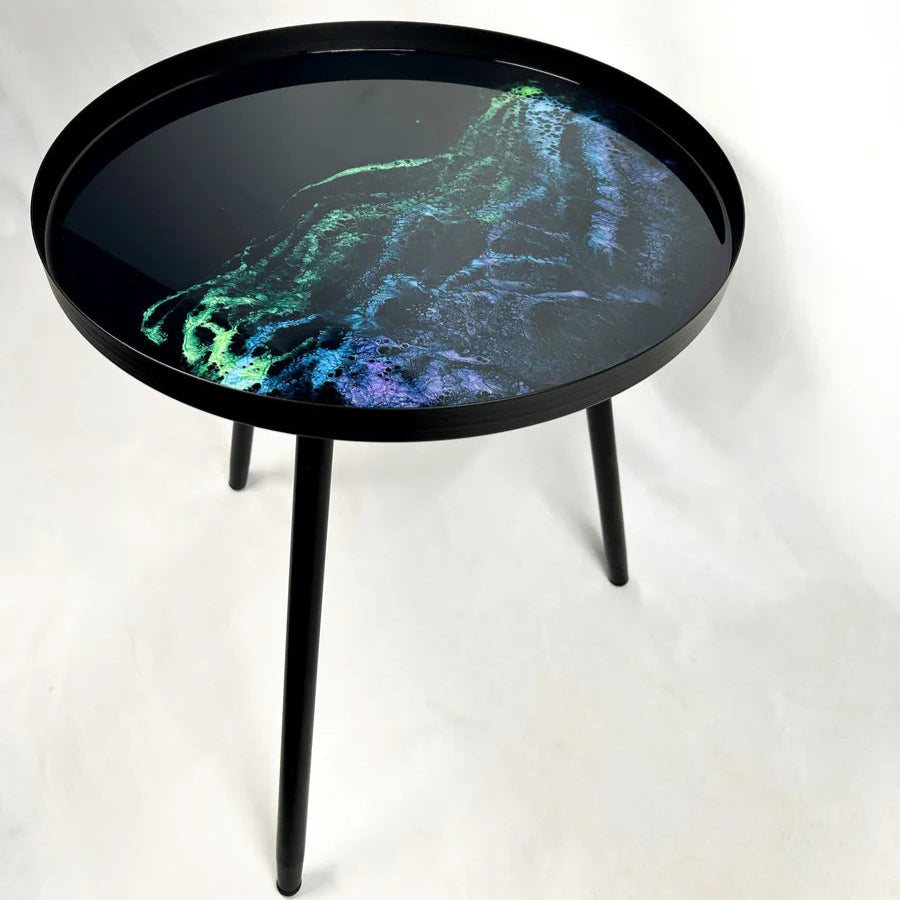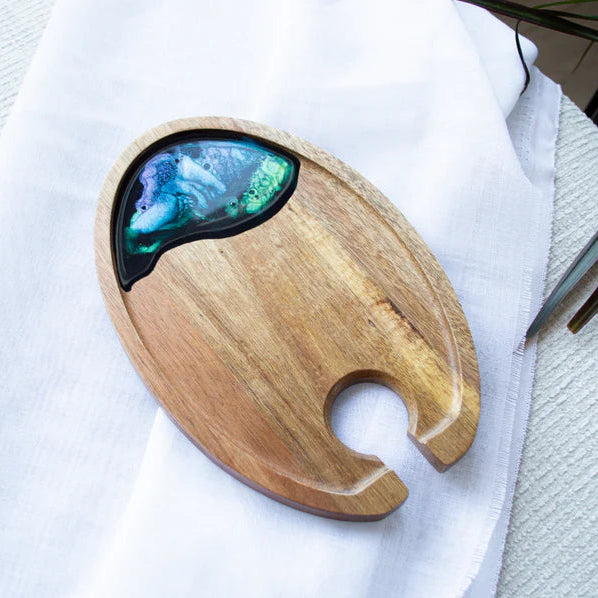You can have the best resin, the most flawless pour, the perfect pigment—and it still won’t hit right if the wood underneath isn’t pulling its weight. Over the years, I’ve worked with just about everything you can throw resin at. Some woods shine. Others… not so much. Here’s my honest take on the best wood for epoxy resin tables, based on what’s actually worked in my studio—and what I’d use again in a heartbeat.
It All Starts With the Slab
Before the resin, the wood sets the tone — color, grain, vibe
You’re not just building a table—you’re building around a mood. Whether it’s rustic, modern, or minimal, the wood is what people feel first.
I’ve tested walnut, maple, ash, cherry, and a few surprises
Some blew me away. Some were solid but not exciting. A couple were beautiful nightmares I’ll never mess with again.
Here’s what stood out (and what didn’t quite work for me)
From grain patterns to how well they bonded with resin, these are the hardwoods I keep coming back to—and the ones I suggest for custom builds.
Black Walnut: My Forever Favorite
Rich, dark grain that always looks high-end
It’s the kind of wood that doesn’t need to try hard. The depth, the texture, the tone—it just works.
Takes pigment beautifully, especially blues and metallics
I’ve done black walnut with deep blue resin, silver swirls, even clear floods. Every combo looks intentional and elevated.
Not cheap, but always worth it for statement tables
If you want the kind of table people don’t forget, walnut delivers every time. It’s my go-to for high-end commissions.

Maple: Clean, Bright, and Modern
Lighter tone = perfect for minimalist spaces
If you’re aiming for a Scandinavian, gallery-like vibe, maple nails it. Subtle, smooth, and super clean.
Takes stain well, pairs nicely with soft pastels or white resin
White pearl, soft gray, or even muted green resin looks amazing with maple’s lighter grain.
Budget-friendly compared to walnut, but a little less dramatic
It’s accessible and versatile—but if you’re going for bold drama, maple might feel a bit too soft.
Cherry: Warm, Classic, and Ages Like Wine
Reddish hue deepens over time — it glows under epoxy
Cherry has a warmth you can’t fake. As it ages, the color matures and takes on a rich, natural glow under clear coats.
Smooth grain, easy to sand and prep
It’s a forgiving wood for builders—easy to work with, and super satisfying to finish.
Great for traditional spaces or darker resin pours
I love pairing it with copper, smoky black, or gold resin. Feels luxe without feeling flashy.

Ash: Underrated and Super Durable
Bold grain patterns and a pale tone that pops
Ash looks almost like oak, but cleaner. It gives just enough visual movement without being chaotic.
Strong, with minimal warping if dried properly
This is a sleeper pick for stability. It holds its shape, takes resin well, and has a strong presence without stealing the spotlight.
I use this when I want texture without overwhelming the resin
It’s a great supporting player—lets the resin shine while still showing off.
Oak: Rustic, Familiar, and Tough
Heavy, with a coarse grain that gives tables a farmhouse feel
If your style leans rustic or vintage, oak fits the mood. It feels lived-in from the start.
I’ve found it pairs well with more subtle resin work
Bold colors can clash with oak’s heavy grain, but soft tones or clear coats blend beautifully.
Can be a bit “loud” for some — depends on your style
If you’re after clean and minimal, oak might feel too aggressive. But for farmhouse or industrial tables? Perfect.

Other Woods I’ve Experimented With
Teak: Gorgeous but oily — hard to bond with resin unless prepped right
If you don’t acetone and sand it thoroughly, resin won’t stick. I’ve had more fails than wins with this one.
Olive: Beautiful grain, but rare and pricey
Absolutely stunning—but not something I’d recommend for beginners. It’s temperamental, and slabs can be hard to find.
Poplar: Cheap and soft — great for practice, not long-term builds
Great for experimenting or learning, but it dents and warps easily. I wouldn’t use it for anything meant to last.
Zebrawood: Wild grain that steals the show — use sparingly or as an accent
Great for inlays or mixed-media builds. Too much of it can feel loud, but used right, it’s unforgettable.
My Personal Go-To Pairings
- Walnut + Deep Blue Resin = Showstopper
- Maple + White Pearl Resin = Clean and Modern
- Cherry + Copper Resin = Warm and Luxe
These combos never miss. If you’re stuck on how to pair resin with wood, start here.
A Quick Word on Slab Prep
Moisture content matters more than species
You can have the perfect slab—but if it’s still wet, your pour’s done before it starts. Always check with a moisture meter (<10%).
Always sand, seal, and flatten before pouring
Sealing helps prevent bubbles. Flattening ensures the resin levels correctly. Don’t skip these steps.
Even the best wood can fail if the prep’s rushed
Take your time here. It’s the difference between a clean build and a frustrating one.

What’s “Best” Depends on Your Space (and Style)
Rustic vs. modern, bold vs. soft — it all starts with the slab
Are you building for a mountain cabin? A modern condo? A gallery install? Let the space guide your wood choice.
My advice? Find a wood you love looking at first
Forget what’s trendy. Pick the slab that makes you pause and stare.
The resin brings it to life — but the wood gives it soul
That’s why I always say: don’t just pick wood. Pick character.
Want Help Picking the Perfect Slab?
I work with custom orders all the time — happy to send photos or ideas
If you’ve got a space in mind but don’t know where to start, I’ve got slabs, pairings, and ideas ready to go. Just contact us!







Share: